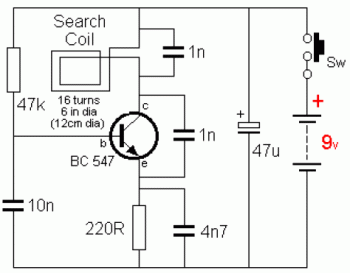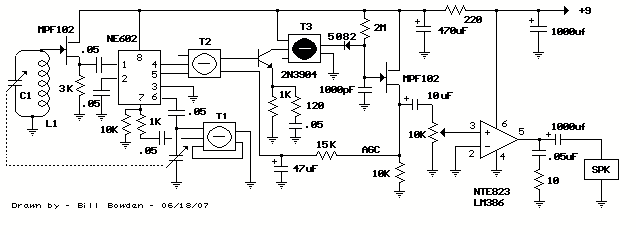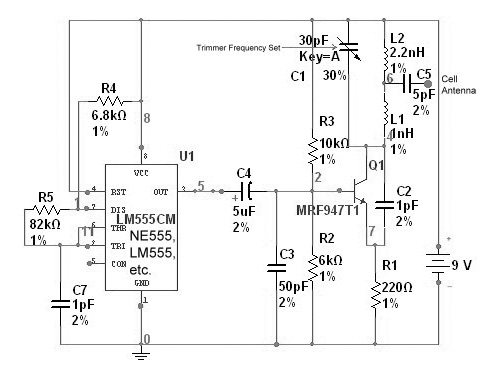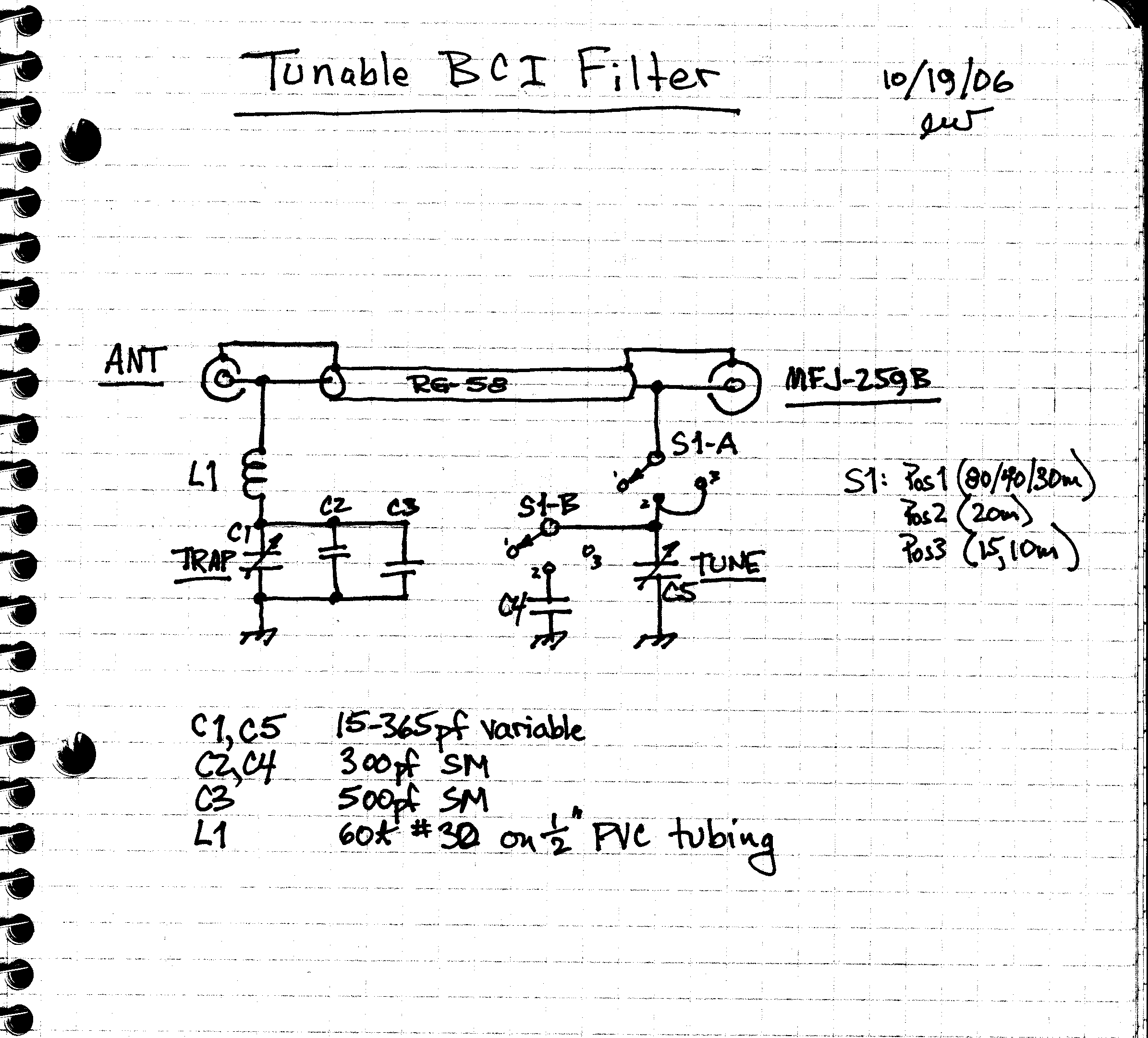
8 low-pass filter MAX291 TA7504P schematic
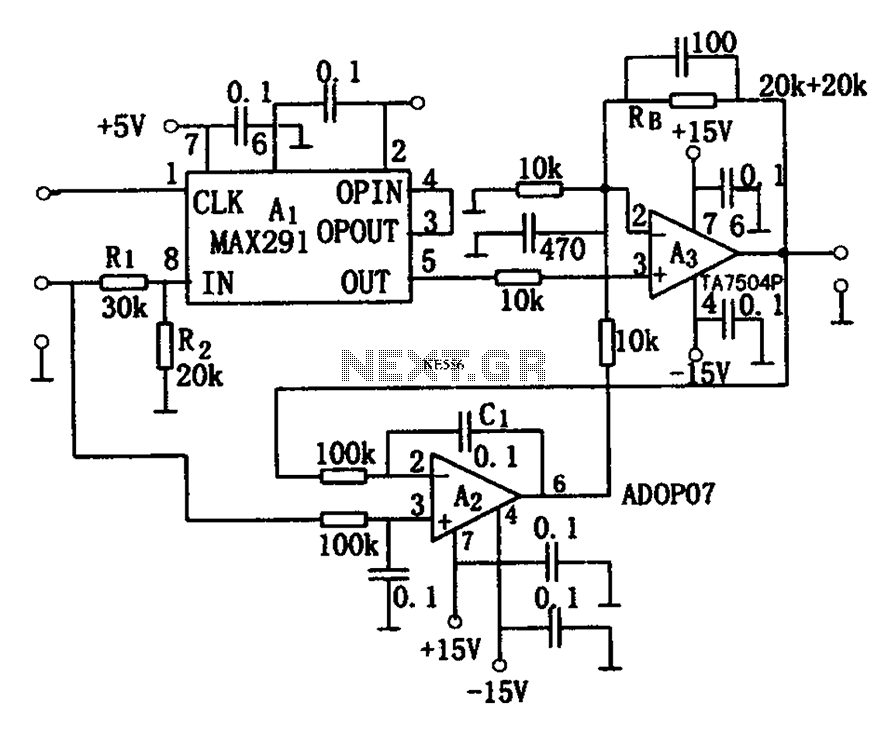
The circuit depicted in Figure 8 is a low-pass filter utilizing an eight-stage switched-capacitor configuration. The cutoff frequency of the circuit can be adjusted, with a clock frequency that can be modified to 1/100 of the original frequency. A clock input, represented as a +5V level square wave signal at the A1 input (IN), allows for specific terminal properties to be obtained at the output (OUT) of the low-pass filter. The circuit features an input attenuator and an output amplifier, enabling the input and output signal levels to reach up to 10V. When the supply voltage is +5V, the circuit can handle input voltage peak values exceeding 9V without significant distortion. An attenuator, composed of resistors R1 and R2, is connected to the circuit's input signal terminal to manage the input voltage. When the input voltage is at 0V, a drift voltage may be generated at the output, reaching up to 0.4V. To address this, a differential detection between the input and output is performed using an operational amplifier A2, which is then fed into the inverting input of A3, effectively offsetting the drift voltage. The operational amplifier A3 is employed to smooth the output waveform from A1, enhancing the overall performance of the circuit. To further minimize the output clock pulses, an additional operational amplifier A1 can be used to implement the filtering process.
The low-pass filter circuit operates by allowing signals below a certain frequency (the cutoff frequency) to pass while attenuating signals above that frequency. The switched-capacitor configuration is particularly advantageous due to its ability to implement precise filtering characteristics without the need for large passive components. The adjustment of the cutoff frequency is accomplished through the modulation of the clock frequency, which directly influences the switching rate of the capacitors, thereby altering the filter's response.
The inclusion of an input attenuator is critical for protecting the circuit from high voltage levels that could potentially cause distortion or damage. Resistors R1 and R2 are carefully selected to provide the necessary attenuation while maintaining signal integrity. The operational amplifier A2 plays a crucial role in maintaining the accuracy of the output by compensating for any drift voltage that may arise due to variations in the input signal or power supply fluctuations. This ensures that the output remains stable and reliable.
Operational amplifier A3 is used not only for smoothing the output waveform but also to enhance the overall performance of the filter by reducing unwanted noise and improving the quality of the output signal. The design of this circuit exemplifies the integration of multiple operational amplifiers to achieve a robust and versatile low-pass filter suitable for various applications in signal processing and communications. Overall, this circuit design demonstrates a sophisticated approach to filtering, enabling precise control over signal characteristics while ensuring high performance and stability. As shown in Figure 8 times the low-pass filter circuit. This circuit uses eight low-pass filter circuit switched-capacitor configuration. Changing the cutoff frequency of the c lock frequency can be changed, and the cutoff frequency of the clock frequency of 1/100. A clock input plus + 5V level square wave signal at A1 input (IN) and output (OUT) terminal properties can be obtained between the low-pass filter. Because the input attenuator and the role of the amplifier output, input and output signal level can reach 10V.
When the supply voltage is + 5V, 9V input voltage peak value or more, for the distortion does not increase sharply in the circuit input signal terminal access R1 and R2 attenuator. Input voltage is 0V, the drift voltage output generated up to 0.4V, for this purpose DC differential between input and output A2 detected and added to A3-inverting input.
Thereby offsetting drift voltage. A3 for smoothing the output of A1 stepped waveform, to enhance its effect. In order to further reduce the output clock pulses may be used in operational amplifier A1 constituting the filter.
The low-pass filter circuit operates by allowing signals below a certain frequency (the cutoff frequency) to pass while attenuating signals above that frequency. The switched-capacitor configuration is particularly advantageous due to its ability to implement precise filtering characteristics without the need for large passive components. The adjustment of the cutoff frequency is accomplished through the modulation of the clock frequency, which directly influences the switching rate of the capacitors, thereby altering the filter's response.
The inclusion of an input attenuator is critical for protecting the circuit from high voltage levels that could potentially cause distortion or damage. Resistors R1 and R2 are carefully selected to provide the necessary attenuation while maintaining signal integrity. The operational amplifier A2 plays a crucial role in maintaining the accuracy of the output by compensating for any drift voltage that may arise due to variations in the input signal or power supply fluctuations. This ensures that the output remains stable and reliable.
Operational amplifier A3 is used not only for smoothing the output waveform but also to enhance the overall performance of the filter by reducing unwanted noise and improving the quality of the output signal. The design of this circuit exemplifies the integration of multiple operational amplifiers to achieve a robust and versatile low-pass filter suitable for various applications in signal processing and communications. Overall, this circuit design demonstrates a sophisticated approach to filtering, enabling precise control over signal characteristics while ensuring high performance and stability. As shown in Figure 8 times the low-pass filter circuit. This circuit uses eight low-pass filter circuit switched-capacitor configuration. Changing the cutoff frequency of the c lock frequency can be changed, and the cutoff frequency of the clock frequency of 1/100. A clock input plus + 5V level square wave signal at A1 input (IN) and output (OUT) terminal properties can be obtained between the low-pass filter. Because the input attenuator and the role of the amplifier output, input and output signal level can reach 10V.
When the supply voltage is + 5V, 9V input voltage peak value or more, for the distortion does not increase sharply in the circuit input signal terminal access R1 and R2 attenuator. Input voltage is 0V, the drift voltage output generated up to 0.4V, for this purpose DC differential between input and output A2 detected and added to A3-inverting input.
Thereby offsetting drift voltage. A3 for smoothing the output of A1 stepped waveform, to enhance its effect. In order to further reduce the output clock pulses may be used in operational amplifier A1 constituting the filter.
